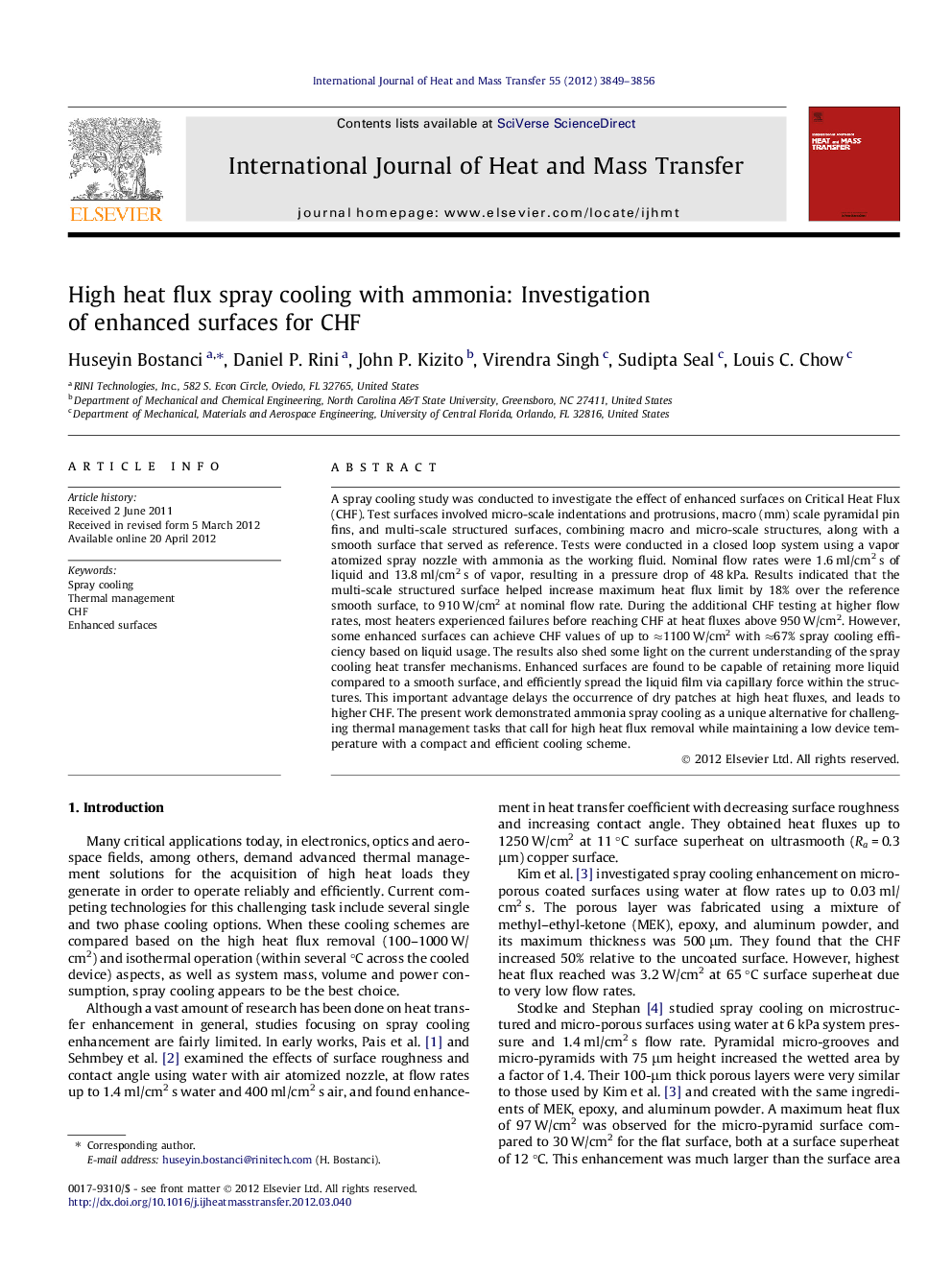| Article ID | Journal | Published Year | Pages | File Type |
|---|---|---|---|---|
| 658409 | International Journal of Heat and Mass Transfer | 2012 | 8 Pages |
A spray cooling study was conducted to investigate the effect of enhanced surfaces on Critical Heat Flux (CHF). Test surfaces involved micro-scale indentations and protrusions, macro (mm) scale pyramidal pin fins, and multi-scale structured surfaces, combining macro and micro-scale structures, along with a smooth surface that served as reference. Tests were conducted in a closed loop system using a vapor atomized spray nozzle with ammonia as the working fluid. Nominal flow rates were 1.6 ml/cm2 s of liquid and 13.8 ml/cm2 s of vapor, resulting in a pressure drop of 48 kPa. Results indicated that the multi-scale structured surface helped increase maximum heat flux limit by 18% over the reference smooth surface, to 910 W/cm2 at nominal flow rate. During the additional CHF testing at higher flow rates, most heaters experienced failures before reaching CHF at heat fluxes above 950 W/cm2. However, some enhanced surfaces can achieve CHF values of up to ≈1100 W/cm2 with ≈67% spray cooling efficiency based on liquid usage. The results also shed some light on the current understanding of the spray cooling heat transfer mechanisms. Enhanced surfaces are found to be capable of retaining more liquid compared to a smooth surface, and efficiently spread the liquid film via capillary force within the structures. This important advantage delays the occurrence of dry patches at high heat fluxes, and leads to higher CHF. The present work demonstrated ammonia spray cooling as a unique alternative for challenging thermal management tasks that call for high heat flux removal while maintaining a low device temperature with a compact and efficient cooling scheme.
